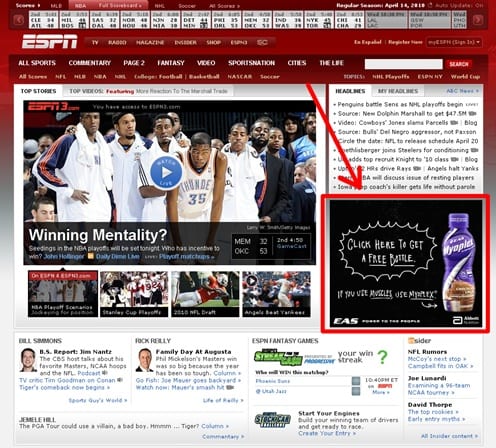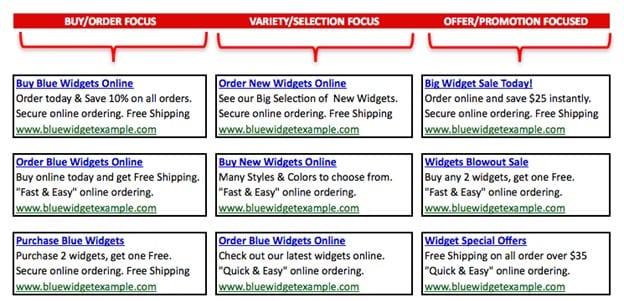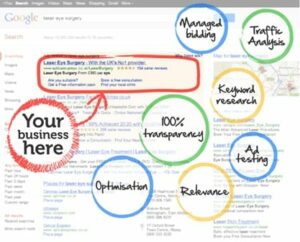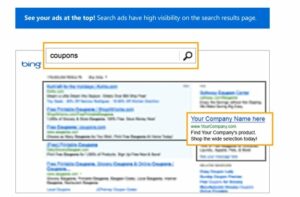Paid search marketing and organic search marketing are the most widely used online marketing techniques.
It is impossible to have a successful business without knowing the ins and the outs of online marketing.
Almost every, small or large, business has an online presence that requires optimization for increased online visibility. There are a couple of things that play a crucial role in helping your business gain more viability online.
First of all, for those who are not aware, paid search marketing is an online technique that allows you to promote your business through various online platforms at a price. It is a complete opposite of organic search marketing. The following image shows an example of paid advertisement on Google.
The purpose of paid search marketing is not any different from organic search marketing. In fact, all online marketing techniques are geared to fulfill one mission and that is to reach target audience for potential sales. Peruse the process of targeting customers through various firms of online marketing below.
Step 1# Understand the types of paid search marketing
Before you go ahead and allocate budget for your paid search marketing campaign, it is crucial that you understand the various online territories that you can utilize for promotion activities. You need to understand your strengths and weaknesses before you pick a platform for paid advertisement and promotion.
Most companies perform a thorough online marketing analysis before they pick a territory. You need a platform that can help you reach to your target audience. Therefore, you cannot just randomly pick something. Remember that online marketing, no matter what type, requires meticulous strategic steps. Generally there are two types of ads:
Banner ads:
Text ads:
Step 2# Pick your platform
Here are some of the places that you can list your both banner and text ads on the internet.
Google AdWords:
Bing or Yahoo:

Facebook:
The above-mentioned platforms are one of the most commonly utilized for ad posting because they have a substantial user base. The more users you reach out to, the better you have the chance to build a substantial revenue stream. The ad postings are not the only thing that you need to consider; you need to track your progress.
Step 3# Understand Essential Metrics to track your Campaign Progress
Here are some of the most commonly utilized metrics that can help you monitor your advertising campaign progress.
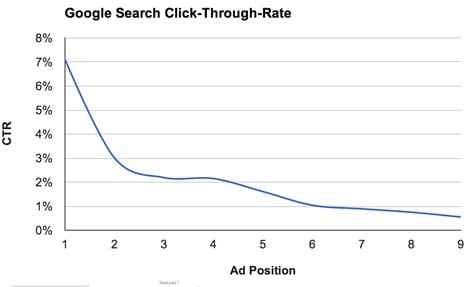
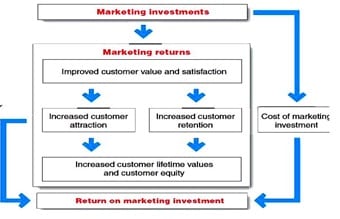
- Click-through rate (CTR): CTR shows you the percentage of total ad clicks out of total impressions.
- Conversion rate: Conversion rate shows the percentage of people who actually turn into customers. Not all people who click on ads become customers or perform the end action.
- New leads: The main purpose of an advertising campaign is to make sure that you can have ample leads to garner exposure for your business services or products.
- New subscribers: Your advertising campaign should be able to draw enough people so you can build your subscriber base. Subscribers may not necessarily convert into customers, but they are your potential customers.
- Cost per lead: Calculate cost per lead to understand how well your investment is doing. Divide the total amount of money spent on the campaign with the number of leads generated by the campaign.
- Cost per customer: Pretty similar to the cost per lead, calculate cost per customer by dividing the amount investment spend on the campaign with the number of customers generated through the campaign.
- Total revenue: Regardless of your goal with your advertising campaign, you should always track your progress and calculate your return on investment. The following figure shows the relation of investment with ROI. Depending on your goal, your ROI can mean a lot of things. For some companies, ROI means substantial reach, while for others it is defined by a monetary return.

Paid search marketing plays a crucial role in helping you garner the online visibility that your business needs to successfully turn audience into customers. Understand your goals and business objectives before choosing a channel for your ad postings. After you are done with ad postings, always have a plan in place to measure the progress through various metrics. Without proper monitoring, you will never be able to calculate your ROI.

